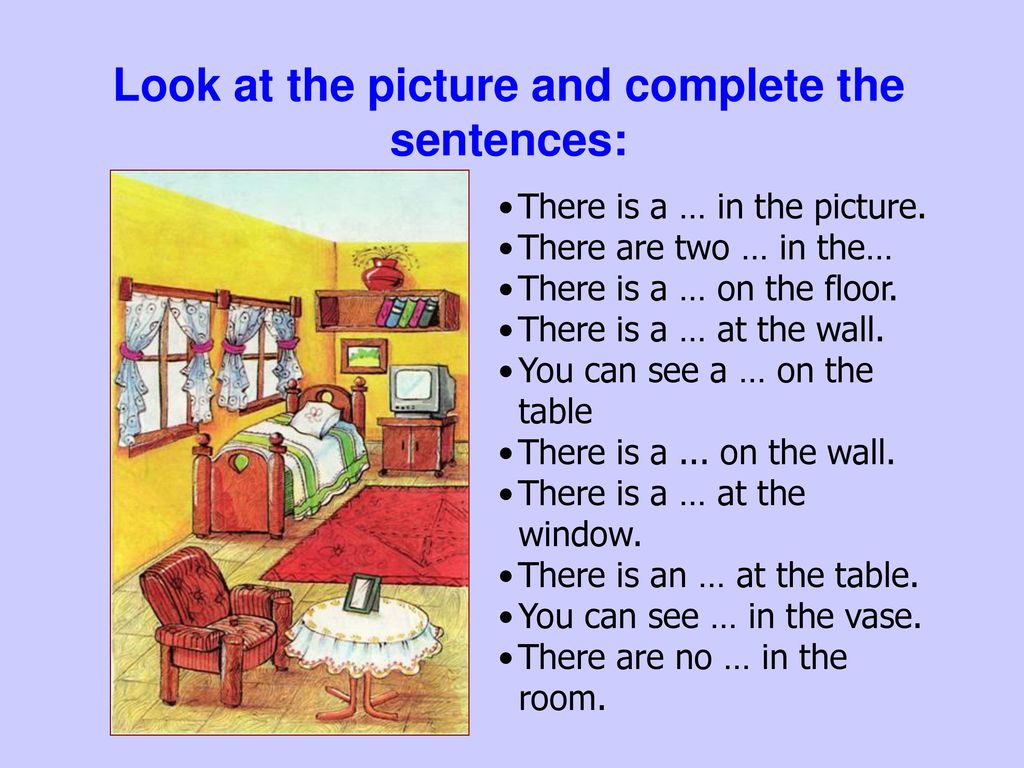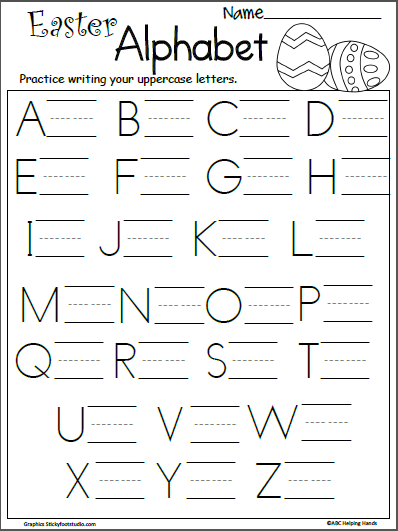Teach words to toddlers
How to Teach Your Toddler to Talk: Tips and Tricks
From the time of birth your baby will make a lot of sounds. This includes cooing, gurgling, and of course, crying. And then, often sometime before the end of their first year, your baby will utter their very first word.
Whether that first word is “mama, “dada,” or something else, this is a huge milestone and an exciting time for you. But as your baby becomes older, you might wonder how their language skills compare to children of a similar age.
To be clear, children learn to talk at different speeds. So if your baby talks later than an older sibling, there probably isn’t anything to worry about. At the same time, though, it helps to understand typical language milestones. This way, you can pick up on possible developmental issues early. The reality is, some toddlers need a little extra help when learning to talk.
This article will discuss common language milestones, as well as a few fun activities to encourage speech.
Even though toddlers develop language skills gradually, they’re communicating from as early as birth.
0 to 6 months
It’s not unusual for a baby age 0 to 6 months to make cooing sounds and babbling sounds. And at this age, they’re even able to understand that you’re speaking. They’ll often turn their head in the direction of voices or sounds.
As they learn how to understand language and communication, it becomes easier for them to follow directions, respond to their own name, and indeed, say their first word.
7 to 12 months
Typically, babies ages 7 to 12 months may understand simple words like “no.” They might use gestures to communicate, and may have a vocabulary of about one to three words, though they may not speak their first words until after they turn 1.
13 to 18 months
Around 13 to 18 months a toddler‘s vocabulary can expand to 10 to 20+ words. It’s at this point that they start to repeat words (so watch what you say). They can also understand simple commands like “pick up the shoe,” and can typically verbalize certain requests.
19 to 36 months
At age 19 to 24 months, a toddler’s vocabulary has expanded to 50 to 100 words. They can likely name things like body parts and familiar people. They may begin to speak in short phrases or sentences.
And by the time your toddler is 2 to 3 years old, they can have a vocabulary of 250 words or more. They can ask questions, request items, and follow more detailed directions.
Of course, the age ranges above are just a guideline. And the truth is, some toddlers pick up language skills a bit later than others. This doesn’t mean that there’s a problem.
Although your child will likely catch up on language skills at some point, there’s plenty you can do in the meantime to encourage speech and help develop their language skills.
Read together
Reading to your child — as much as possible every day — is one of the best things you can do to encourage language development. One 2016 study found children are exposed to a broader vocabulary through having picture books read to them than hearing adult speech.
In fact, according to a 2019 study, reading just one book each day can translate to children being exposed to 1.4 million more words than those children who aren’t read to by kindergarten!
Use sign language
You don’t have to be fluent in sign language to teach your toddler a few basic signs.
Many parents have taught their babies and toddlers how to sign words like “more,” “milk,” and “all done.” Young children often grasp a second language easier than adults. This may allow them to communicate and express themselves at a much younger age.
You’ll sign the word “more,” while saying the word at the same time. Do this repeatedly so that your child learns the sign, and associates the word with it.
Giving your toddler the ability to express themselves through sign language may help them feel more confident in their communications. Helping them communicate with less frustration might help create a better environment for learning more language.
Use language whenever possible
Just because your baby can’t talk doesn’t mean you should sit in silence all day. The more you talk and express yourself, the easier it’ll be for your toddler to learn language at a younger age.
The more you talk and express yourself, the easier it’ll be for your toddler to learn language at a younger age.
If you’re changing your toddler’s diaper, narrate or explain what you’re doing. Let them know about your day, or talk about anything else that comes to mind. Be sure to use simple words and short sentences when possible.
You can also encourage talking by reading to your toddler as you move through your day. You can read the recipe while you’re cooking together. Or if you’re enjoying a walk around your neighborhood, read street signs as you approach them.
You can even sing to your child — maybe their favorite lullaby. If they don’t have one, sing your favorite song.
Refrain from baby talk
While it’s adorable when little ones use words incorrectly or use baby talk, leave it to them. Don’t feel like you need to correct them, just respond with the proper usage. For example, if your little one asks you to “bunnet” their shirt, you can simply say “Yes, I’ll button your shirt. ”
”
Name items
Some toddlers will point to an item they want instead of asking for it. What you can do is act as your child’s interpreter and help them understand the names of certain items.
For example, if your toddler points to a cup of juice, respond by saying, “Juice. Do you want juice?” The goal is to encourage your child to say the word “juice.” So the next time they want something to drink, instead of just pointing, encourage them to say the actual word.
Expand on their responses
Another way to expand your child’s vocabulary is to expand on their responses. For example, if your child sees a dog and says the word “dog,” you could respond by saying, “Yes, that’s a big, brown dog.”
You can also use this technique when your child drops words in a sentence. Your child might say, “the dog big.” You can expand on this by responding, “The dog is big.”
Give your child choices
You can also encourage communication by giving your child choices. Let’s say you have two juices and you want your child to choose between orange juice and apple juice. You can ask your toddler, “Do you want orange, or do you want apple?”
Let’s say you have two juices and you want your child to choose between orange juice and apple juice. You can ask your toddler, “Do you want orange, or do you want apple?”
If your toddler points or gestures their response, encourage them to use their words.
Limit screen time
A 2018 study found that increased screen time on mobile media devices was associated with language delays in 18-month-olds. Experts point out interactions with others — not staring at a screen — is best for language development.
The American Academy of Pediatrics (AAP) encourages no more than 1 hour of screen time per day for kids ages 2 to 5, and less time for younger children.
But even if you put forth these efforts to get your toddler to talk, they might have difficulties with verbal communication. Symptoms of a language delay can include:
- not talking by the age of 2
- having trouble following directions
- difficulty putting together a sentence
- limited vocabulary for their age
If you have concerns, speak with your child’s pediatrician. Possible causes of language delays can include intellectual disabilities and hearing impairments. Language delays may also be a sign of autism spectrum disorder.
Possible causes of language delays can include intellectual disabilities and hearing impairments. Language delays may also be a sign of autism spectrum disorder.
Your child might need a comprehensive assessment to help determine the underlying cause. This can include meeting with a speech pathologist, a child psychologist, and possibly an audiologist. These professionals can identify the problem and then recommend solutions to help your child meet language milestones.
Hearing your baby’s first word is an exciting time, and as they become older, you might be equally excited for them to follow directions and put sentences together. So yes, it’s discouraging when your toddler doesn’t hit these important milestones as you expected.
But even if your child experiences some language delays, this doesn’t always indicate a serious problem. Remember, children develop language skills at different speeds. If you have any concerns or feel that there’s an underlying issue, speak with your pediatrician as a precaution.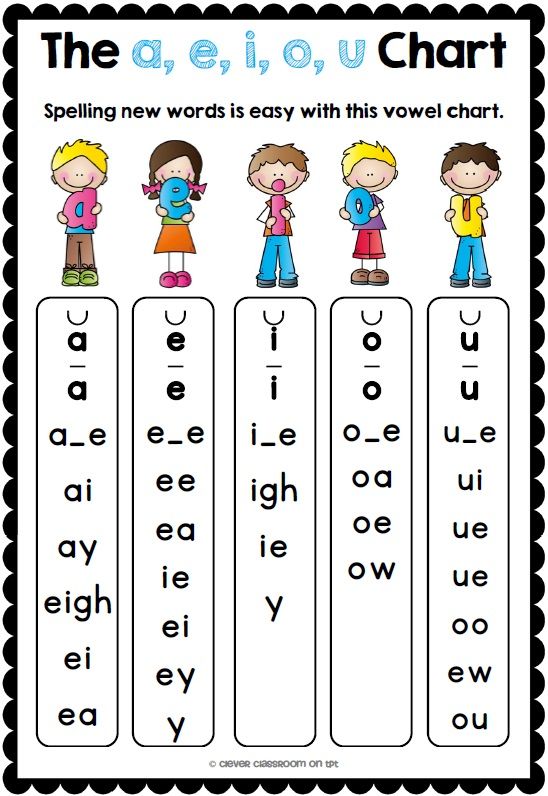
21 Tips to Teach Your Toddler to Talk and Develop Language
607 shares
- Share
- Tweet
In my experience, life as a parent got a whole lot easier once my daughter started talking. Not just saying simple words, but actually speaking in 2-3 word phrases and full sentences. When she could express herself to get her wants and needs met, it made her much more pleasant.
Not only does language make the day-to-day more manageable with a toddler, but it’s amazing to see your child learning new skills every day.
THE IMPORTANCE OF PLAY IN LEARNING TO TALK
Even way before children learn to speak, they’re taking in so much information through their senses. During play, mealtime, bedtime, and bath time, they’re gaining a better understanding of how their bodies and objects work.
Play is the main occupation of babies and toddlers because when they’re not eating and sleeping, they’re playing. . They learn new skills, concepts, and all about the world around them through play.
. They learn new skills, concepts, and all about the world around them through play.
While play may seem simple and fun to you, it is one of the best learning experiences for your child. They are learning sizes, colors, shapes, actions, and concepts by simply placing a square cube into a large cup or pushing a button to make an object pop out.
Once they are able to label the objects, actions, and concepts that they are learning, they will have a much better time during play. As much as independent play is great for learning, guided play with an adult is a great way to get your toddler learning to talk. It is, in fact, the only way to really get their language exploding.
Get A Year of Activities for Your Child FREE!
Sign up here to get an email every month with new and exciting crafts, activities, and printables for your children.
HOW TO TEACH YOUR TODDLER TO TALK TIPS
The best way to get your toddler to talk is by turning everyday activities into learning experiences. As they go about their day-to-day life, there is a wealth of knowledge and teaching opportunities for them to encounter. You just have to be available and willing to do it with them.
As they go about their day-to-day life, there is a wealth of knowledge and teaching opportunities for them to encounter. You just have to be available and willing to do it with them.
Don’t worry if you’re not teaching them all of these things, as a lot of skills occur naturally. However, if there are some things that you want your baby to pick up quicker, there are plenty of ways to help move them along.
Babies and toddlers learn through repetition and consistency. I put together a bunch of tips to get you started. If you want to learn how to teach your toddler to talk, follow these tips.
1. SIMPLY TALK TO THEM
A LOT. You may think that you talk to them enough now, but if your child isn’t speaking yet, maybe you’re not talking to them enough. Use every opportunity to expose them to language, even if they’re not responding back. During diaper changes, while you’re making dinner, at mealtimes, etc. You can expose them to a ton of new language during everyday activities. Have normal conversations with them, even if you think the vocabulary is too complex.
Have normal conversations with them, even if you think the vocabulary is too complex.
2. DICTATE WHAT YOU’RE DOING
It can get pretty quiet in a house alone with a baby. Since they’re not talking back to us, we’re less inclined to talk to them. However, as I said before, make everyday activities become learning experiences for your child.
Talk about your day and their days as you go about doing things. I’m washing the dishes. You’re playing with the ball. I’m curling my hair. They will love hearing the sound of your voice and hearing the dialogue is a great way for them to start picking up new vocabulary.
3. LABEL EVERYTHING VERBALLY
As your child plays, eats, or just hangs out, say the toys or objects that they are holding, seeing, or hearing. Label everything that you can so they hear the words over and over again. This is when repetition comes in, as well. If you’re naming the foods they eat or the things they play with, every day, they should start to pick up the vocabulary very soon.
4. HAVE THEM REPEAT
Once you get in the routine of labeling everything to them, have them repeat it back to you. Start with just one word or even the first sound of the word. If they say ‘muh’ for milk or ‘buh’ for ball, that’s a great start! This shows that they are still getting the concept that all of these objects have names, but they just can’t make all the sounds correctly yet.
5. USE WHAT INTERESTS THEM
Determine what your child likes and use that to your advantage. If they obsess over a certain character, music, food, or toy, provide them with plenty of opportunities to see, hear, taste, and play with that item while also talking about it with them. If your child loves cars and trucks, don’t try to get them to sit down and learn animal noises. Use what works. It will be a lot less of a struggle if they show interest in that activity.
6. USE MUSIC
Babies and toddlers love a good rhythm and music, so they’re more likely to pick up words and gestures from a song. My son loves “Baa Baa Black Sheep” and one of his first words is “Baa Baa” just because of the song.
My son loves “Baa Baa Black Sheep” and one of his first words is “Baa Baa” just because of the song.
Try singing simple kids songs with gestures, like The Wheels on the Bus, Itsy Bitsy Spider, and Twinkle Twinkle. If they begin to imitate the movements and gestures that go along with the song, words should follow. Making music may also help to get them singing songs. You can use maracas, drums, and xylophones to get your little one making sounds and noises as well.
7. USE OPEN-ENDED TOYS
Toys that provide the use of imagination are the best for little ones. Using stacking cups, Mega Blocks, Shape Sorters, and pretend play toys are a few great items that encourage creativity and exploration. These are far better than electronic games that do all the work for them.
Read more about why unstructured play is so beneficial to young children.
8. ALLOW FOR AN EXPECTANT PAUSE
An expectant pause is allowing some time to pass for your child to give you a response. As children are learning to talk, their processing speed will be a lot slower than ours.
As children are learning to talk, their processing speed will be a lot slower than ours.
If you’re asking them to repeat a sound, word, or object or asking them a question, expect that they may need extra time.Therefore, give them a few seconds to respond before you just decide to give them the answer or move on to the next word.
9. GUIDED PLAY
As stated above, play is great for toddlers to learn new language and skills, however, they shouldn’t always be left to play independently. Guided play simply means that you sit with them while they play and actually guide their actions while also labeling everything that they are doing.
So while they’re playing with a shape sorter, talk to them about the objects and what they are doing: “This is a square. This is a circle. The circle goes in. The square drops down.” If they’re coloring, use language like, “that is a crayon. The crayon is blue. You’re coloring. Draw a circle. Hold the crayon in your hand.”
Use this time to ask questions (“what animal is this?”), give commands “(“put the grapes in the shopping cart”), or get them to repeat (“This is a block. Say block.”)
Say block.”)
All of this extra language is so helpful for them to hear, rather than playing quietly by themselves.
10. DON’T RESPOND TO GESTURES AS A FORM OF LANGUAGE
Using grunts, pointing, signs, or signaling is still considered expressive language. The child is still communicating in a way to get you to understand their wants and needs.
Therefore, early on, it is ok to let your child make gestures to communicate. However, if you really want them to start talking, you need to stop fulfilling their requests from signals. Wait until they say a word or at least, make a sound (first syllable) similar to the word, in order to get what they want.
They won’t be able to say, Can I have the ball, please? But if they’re pointing at the ball, wait until they say ball or buh before handing it over.
11. START SMALL
If you’re still just struggling to get your child to make sounds and one-syllable words, don’t expect them to say large words. Even an attempt to say the first sound of a word is a great start!
Even an attempt to say the first sound of a word is a great start!
12. SPEAK WITH EXCITEMENT
Toddlers really love seeing their parents get excited. They’ll have an easier time responding and imitating when you’re showing lots of excitement in your expressions and voice. So be sure to use overly exaggerated gestures, facial expressions, and sounds.
13. GET SILLY
Let out the silliness and craziness with your child. They will love playing fun games with you! So think of some wild chase you have to go on to find a goose, the alligator that might get you if you walk too slow, or even just a wild dance party. Language happens when children are really engaged and entertained.
14. SPEAK SLOWLY, BUT NOT BABY TALK
The more you speak using regular adult language instead of baby talk, the easier it will be for your child to pick up this language too. Your toddler should be well past the dadada and bababa stages, so try not to use these babblings to get your child to talk.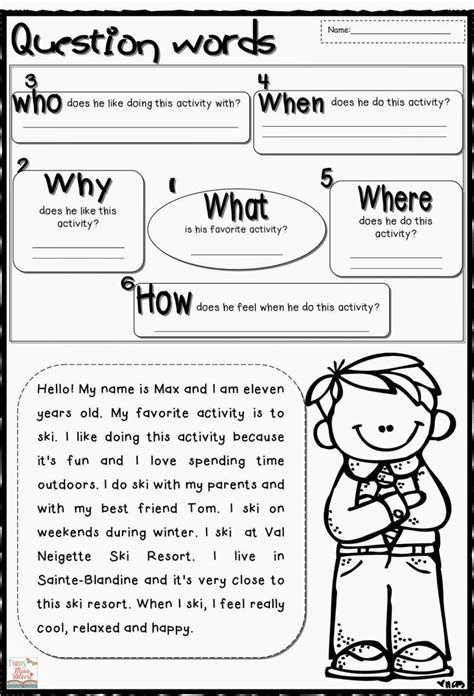
Of course they may use some of these sounds to indicate an object like baba for bottle or ma for milk, but if you hear them saying the babbles, just repeat the real word back to them.
Also, make sure you’re slowing down your speech when you are talking to them. As I said before, their processing speed is much slower than ours at this point.
This means that it takes their little brains longer to hear, understand, and respond when you speak. If you slow down both your speech, as well as your expectations of their response time, you may notice an improved rate of language.
15. READ EVERYDAY
Books are such a wonderful tool to get your child to learn language, concepts, and form a love of reading. As there are so many benefits of reading to your child early on, developing new vocabulary is one of the most important ones.
As you read to your child, point out objects and pictures in the book. Depending on how far along your child is in their language development, you can say the word a couple of times yourself and have them repeat it back to you, have them point to a picture while attempting to say the sound, ask them what the picture is, or what the action is that is happening.
If you use television or an iPad to keep your child occupied, replace the screen with books. The more your child gets used to looking at books, the more excited he or she will get for reading.
16. LIMIT PACIFIER USE
Plugging up a child’s mouth with a pacifier throughout the day can be detrimental to them learning to speak. Pacifiers or thumb sucking will inhibit them to talk or use their mouths to make sounds and words. Only use the pacifier during bedtime, if necessary.
Related Post: 21 Important Things to Teach Your 2 Year Old
17. LIMIT SCREEN TIME
While you may think that educational television shows and iPad games would be helping your child learn how to talk, that’s not the case. While there are some cognitive concepts that your child can learn from Sesame Street or Bubble Guppies, they’re not learning language at all.
Watching television and using an iPad are completely passive activities. This means that your child doesn’t have to do anything besides sit there.
The best way for them to learn language is to participate in active play, not passive. They need to speak reciprocally to another human being and not to a television.
The Acadamy of American Pediatrics (AAP) recommends that children under 18 months old avoid screen time completely. Children 18-24 months should only have screen time if it’s an educationally-based program and a caregiver is close by to guide learning and understanding. 2-5 Year olds should be limited to 1 hour per day of educationally-based programs.
Of course screen time can be necessary at times where you need a little peace and quiet, but I wouldn’t suggest putting your child in front of the tv for an extended period of time.
If you do have your child watching tv or playing an iPad game, use it as an interactive experience instead of passive time. For example, while they’re watching the show, ask them questions about it. Tell them to point out the characters or objects. Dictate what is happening or what you see.
18. USE MOVEMENT
Movement can be a great way to get your child to talk. The excitement of jumping, running, or bouncing may make them want to scream for joy.
This activity is especially good for those sensory seekers. Giving them opportunities to jump on a trampoline, bounce on a large therapy ball, or run through an obstacle course, can increase language. Try having them sing a song while jumping, make animal noises as they run, or name and point to a body part as they bounce.
19. SOCIALIZATION
Children love seeing others their age doing the same things as them. Putting your child in a setting where they can learn and grow from their peers is an excellent way to get them learning how to talk.
Whether it’s a daycare setting, playgroup, mommy-and-me class, or meet up with friends and family, having other kids around makes a big difference with language.
20. USE EXPANSION LANGUAGE
Expanding on your child’s language will help them to gain new vocabulary. Try this: When your child says a word or phrase, always expand on that thought for them.
Try this: When your child says a word or phrase, always expand on that thought for them.
For example:
- Child: “Milk”
- Parent: “You want more milk.”
- Child: “Up”
- Parent: “You want me to pick you up”
Adding to their thoughts will help them understand the full phrases that should be stated. Also, you may think your child is too young to pick up full sentences, but expansion language should be used at any age. It will help them to understand what words go together and how to expand on each word.
21. PRAISE AND MOTIVATION
Celebrating every little accomplishment makes your child feel good. In turn, this will be very motivating for him to continue to do the things that get you excited. So go over the top with excitement for each little sound or word. You will definitely see how it increases their language each time.
. . . . .
Of course, you can have all the toys in the world, but if you aren’t consistent about helping your child learn how to talk, they won’t pick it up quickly.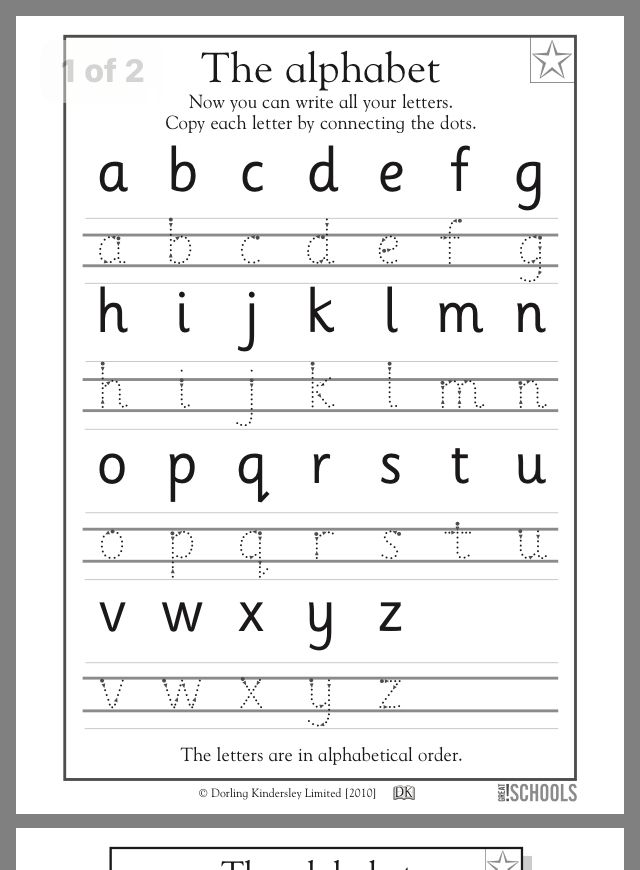 Use these tips and activities multiple times a day and you will see a drastic development of language. Read more about things you should be teaching your 1 year old and 2 year old here.
Use these tips and activities multiple times a day and you will see a drastic development of language. Read more about things you should be teaching your 1 year old and 2 year old here.
Related posts:
Words for kids to learn English
English words for kids - basic phrases and words for all occasions
How can little kids learn English? There are many ways in which you can be successful. But when the question concerns language learning by children, it is better to start with individual words. That is, do not learn sentences right away, but start with the simplest words. When the child has a sufficient vocabulary, you can start learning phrases, then whole sentences. Note that the topic is large, so it is appropriate to divide it into several lessons. At lesson 3-4, start teaching your baby to compose small phrases and sentences with the learned words. And remember: in order for the topic to be learned with maximum efficiency, it is better to learn English words for children with visual materials.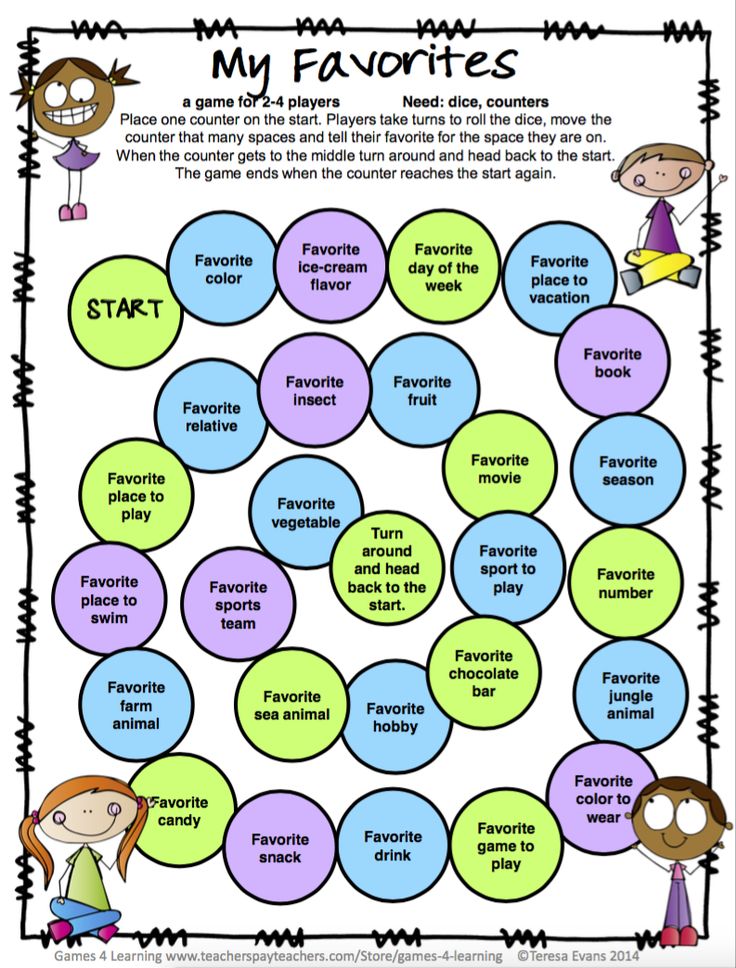 Large colorful pictures are the best solution. Color the lessons for kids with bright colors! Let's go for new knowledge! nine0005
Large colorful pictures are the best solution. Color the lessons for kids with bright colors! Let's go for new knowledge! nine0005
English words for children : where to start?
As we have already said, the topic is voluminous, and it is better to divide it into several sections, that is, lessons. We recommend that you first study such topics as ''Greetings'' and ''Food'' (subsections -> ''Sweets'', ''Meat'', ''Fish products'', ''Seafood'', ''Fruits' ' and ''Vegetables''). Let's consider these topics in more detail and provide examples with translation.
Greetings
When to say what? In conversation with friends and loved ones - Hello ! and Hi !, at school and while talking to strangers -> Good morning!, Good afternoon!, Good evening !
When we say goodbye, we say the following words =>
- Bye! -> Bye!
- Goodbye! -> Goodbye!
- Good luck! -> Good luck!
- See you soon! -> See you soon!
- See you later! -> See you soon!
The rules of etiquette say that after the words of greeting you need to say something else. Several phrases. The following phrases are ideal for this =>
Several phrases. The following phrases are ideal for this =>
- How are you doing? -> How are you?
- How are you? -> How are you?
- How are things? -> How are you?
And the answers to these questions =>
- Excellent -> Excellent.
- Great -> Great.
- Not bad -> Not bad.
- Fine, thanks -> Fine, thanks.
Pay attention also to the following phrases =>
- Nice to see you -> Nice to see you. nine0029 Glad to meet you -> Glad to meet you.
- Happy to see you again -> Good to see you again.
Note! Pay attention to the fact that the word glad is represented in the above phrases by three different words -> nice, glad, happy . This is explained by the fact that in English one word has several synonyms, and in phrases it can acquire a completely different meaning. We will learn synonyms and set phrases later. Just briefly explain to the children why the same word in Russian is represented by three in English.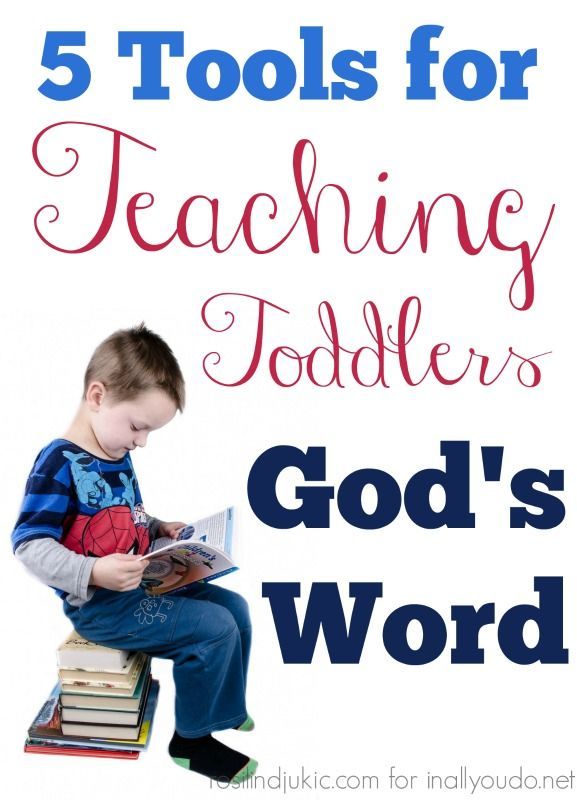 nine0005
nine0005
Food and goodies
This theme will be especially pleasant for kids! Who doesn't love delicious cakes, buttercream cakes, browned muffins and fragrant pastries! Cookies, cakes and sweet rolls beckon the eyes. Be sure, seeing colorful pictures of sweets, the kid will want to learn! Here you will see!
- Cake -> cake
- Cream -> cream
- Cookies -> cookies, homemade cookies nine0029 Marmalade -> Marmalade
- Pudding -> pudding
- Sweets -> sweets
- Sponge cake -> biscuit.
Use the ''delicious'' pictures to study these words. The attention of the baby will be instantly attracted and it will be easy to work with the child! And when we figured out the goodies, we proceed to the study of other words that relate to food =>
- Cheese -> cheese
- Yoghurt -> yogurt
- Sour cream -> sour cream
- Curds -> cottage cheese
- Meat -> meat
- Bacon -> bacon
- Duck -> duck
- Pork -> pork
- Rabbit -> rabbit
- Turkey -> turkey
- Chicken -> chicken
- Caviar -> caviar
- Fish -> fish
- Fish soup -> fish soup
- Crab -> crab
- Herring -> herring
- Salmon -> salmon
- Sea products -> seafood
- Shrimp -> shrimp.

Important! Don't give your child too many words in one lesson. And that can be a mess. Make it a rule: one lesson - no more than five new words . So you will be sure that the child remembers the learned words well and will remember them for a long time. But do not forget at the same time to regularly repeat what has already been covered in the last lesson. Otherwise, you run the risk of starting all over again, because the learned knowledge without regular repetition is easily forgotten. nine0005
Consider some sentences with the above words =>
- Today I want to cook something delicious. I need some sour cream , some salmon and some caviar . The dish will be amazing! -> Today I want to cook something very tasty. I need some sour cream , some salmon and some caviar . The dish will be great!
- What is it? – This is a shrimp .
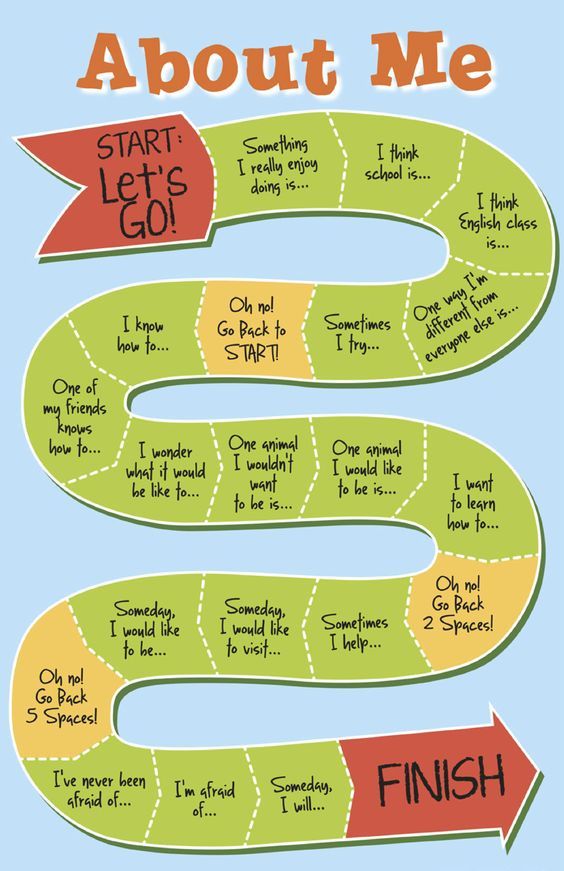 It is a seaproduct -> What is this? This is shrimp . Seafood .
It is a seaproduct -> What is this? This is shrimp . Seafood . - Do you like crabs ? – Yes, of course. They are very delicious and very expencive -> Do you like crabs ? - Oh sure. They are very tasty and very expensive.
- I prefer fish for dinner but my husband likes meat more -> nine0029 If you buy some pork I will make tasty chops -> If you buy some pork , I will make tasty chops.
- For breakfest I choose curds and yoghurt , and you? -> For breakfast, I choose cottage cheese and yogurt , how about you?
Please note! To intrigue the baby and make him take an active part in the conversation, ask counter questions. Like in the last sentence. After you say your offer, ask -> And you? So you will be sure that the baby is listening to what you say, and at the same time will expand his vocabulary.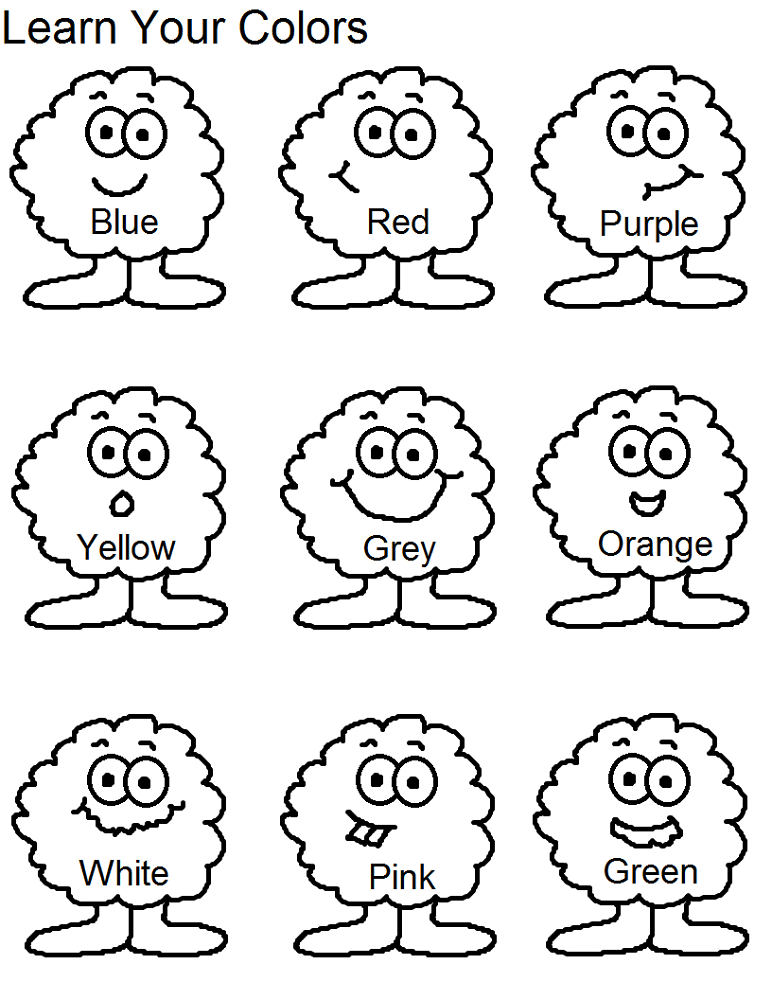 nine0005
nine0005
You can also ask:
- And what about you? (How about you?)
- Will you agree with me? (Do you agree with me?)
- Do you think the same as me? (Do you think the same as me?)
See that the child does not repeat your words, but says new ones. So the result will be more effective.
Fruits and vegetables
Let's separate fruits and vegetables into a separate subcategory. They still have to go separately from the standard meal. We recommend highlighting this subtopic as a separate lesson. And then the pictures can be used in all colors! Green, purple, red, blue, yellow... The palette of colors will play with all the richness of its color! The kids will have fun and enjoy! Here you will see! nine0005
- Apple -> apple
- Apricot -> apricot
- Grapefruit -> grapefruit
- Grape -> grapes
- Plum -> plum
- Cherry -> cherry
- Sweetcherry -> sweet cherry
- Strawberry -> Strawberry
- Cucumber -> cucumber
- Tomato -> tomato
- Potato -> potato
- Artichoke -> artichoke
- Cabbage -> cabbage
- Eggplant -> eggplant
- Carrot -> carrot
- Celery -> celery.
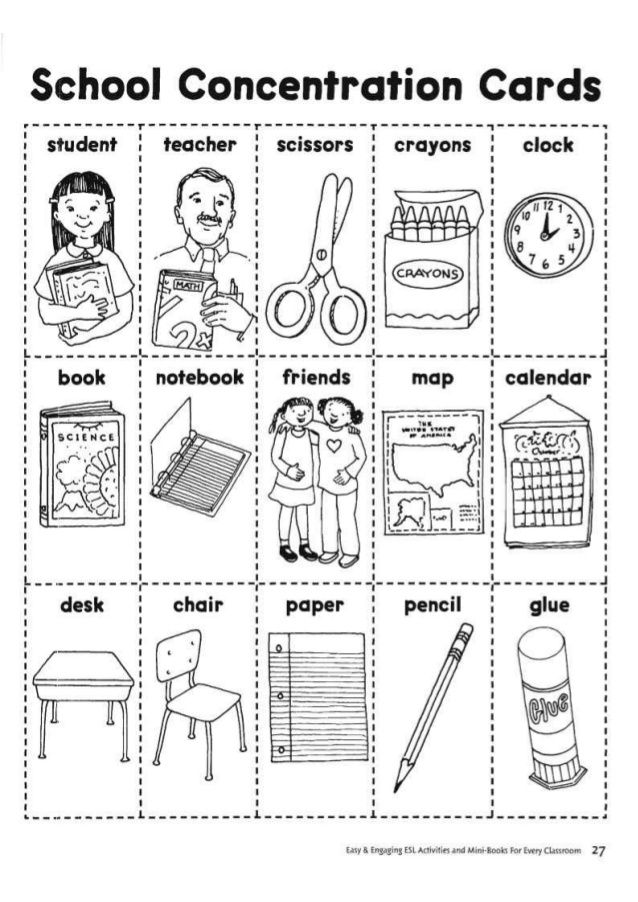
To make words easier to remember, here are a few phrases =>
- Sweet strawberry -> sweet strawberry
- Delicious sweetcherry -> very tasty sweet cherry
- Sour cherry -> sour cherry
- Big plum -> big plum
- Green apple -> green apple
- Tasty potato -> tasty potato
- Orange carrot -> orange carrot.
Note! To learn words faster, play a simple game with your children. The game is very simple, it consists of questions. For example, you ask: Is plum red or blue? (Is the plum red or blue?) The kid must answer by naming the desired color. But see that the children say in response not one word, but a whole sentence. Moreover, ask a counter question: If plum is blue, what fruit is red? (If the plum is blue, which fruit is red?) The kid will be very interested, especially if you use bright pictures as clues. nine0005
Summing up
Teaching a baby to speak English quickly is real! This requires patience, the right approach to the study of the material and colorful scientific materials. If you want classes with children to be effective, and the children start speaking English from the first lesson, use large pictures with bright images and letters (the first letter of the word). Such a simple rule gives a powerful result. You will see - the baby will grasp the information on the go! Associations are a sure way to make lessons effective! nine0005
If you want classes with children to be effective, and the children start speaking English from the first lesson, use large pictures with bright images and letters (the first letter of the word). Such a simple rule gives a powerful result. You will see - the baby will grasp the information on the go! Associations are a sure way to make lessons effective! nine0005
Good luck and conquer new heights!
Ways of memorizing English words for children
In any foreign language, the study of words is the basis on which its further development is based. In English lessons, children, first of all, get acquainted with words, in order to then make up elementary sentences from them and competently build their speech. For adults, this process is faster and easier due to the meaningfulness of the lesson: we understand why we are learning the language, we perceive some laws of grammar on an intuitive level. For a child, this procedure often turns into torment. nine0005
As an English teacher who works mainly with children, I can confidently say that memorizing words for children is sometimes hard work, which discourages the desire to climb into the language jungle. How can you help your child memorize English words?
How can you help your child memorize English words?
From our article you will learn about the most productive ways of memorization.
Association game
The simplest and at the same time fun and effective way to learn vocabulary is associations. To form a child’s interest in the English language, you can assure him that he already has a certain amount of knowledge in this area - these are words that are similar in sound both in Russian and in a foreign language, for example: panda - panda, chocolate - chocolate, zebra - zebra, football - football. These are direct associations. nine0005
Let's complicate the task. If you need to remember a word that has nothing to do with the Russian counterpart, we will form an association that would most quickly pop up in the child’s memory when it sounds: for example,
sleep - sleep (eyes sleep awake when you want to sleep).
You can invite your son or daughter to dream up on their own.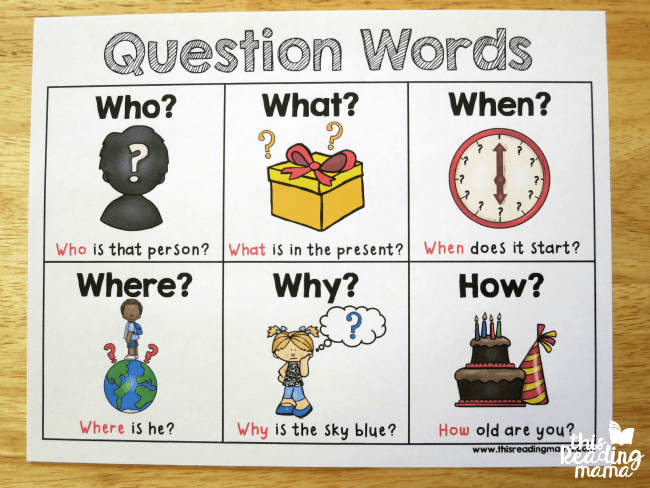 The wider the horizons of the child, the easier it is for him to come up with a convenient association. For example, one of my students suggested an interesting association to the word twins (twins) - chocolate bar twi x, where two sticks are similar to each other. You can build a more complex associative chain, but it's better if it works in 1 or 2 moves.
The wider the horizons of the child, the easier it is for him to come up with a convenient association. For example, one of my students suggested an interesting association to the word twins (twins) - chocolate bar twi x, where two sticks are similar to each other. You can build a more complex associative chain, but it's better if it works in 1 or 2 moves.
The disadvantage of this method is that not all lexical items can be associated with. In addition, the set of associations is limited by the level of knowledge of your child.
Cards for memorizing English words
No less effective among the children's audience is the method of memorizing words through pictures. Bright colorful illustrations attract children's attention, turn the learning process into a tempting game (it would be great if you assign a prize in it). It is enough to buy ready-made thematic cards in the store, draw them yourself or demonstrate them to students through a computer screen. The result will not keep you waiting: the baby will enjoy contemplating the pictures and the ability to name in English what is shown on them. nine0005
The result will not keep you waiting: the baby will enjoy contemplating the pictures and the ability to name in English what is shown on them. nine0005
The resources of this method are also not infinite: for memorization, only those words that can be depicted through a drawing are used. You can try to use pictures not directly, but as associations to other, more complex words.
Let's sing in English!
Singing is one of the favorite activities of most children. And what if we combine music and English? Now your child can boast that he not only knows how to sing, but is able to do it in a foreign language!
Children's songs in English will help your kids learn new lexical units and even whole expressions that he can use in colloquial speech, as well as learn to cope with the fear of speaking in public.
On the Internet you can find many English songs on various topics, ranging from "Happy birthday!" and ending with "Old Macdonald had a farm". Gradually, you can move on to more complex and rhythmic compositions.
English through dancing
A very unusual and productive way of working with words is motor activity. This method of memorization is closely related to the previous one, since while singing, you can ask the child to express with movements what is said in the song.
It will be even more interesting to work to a cheerful English melody, but separately from the text, naming the movements in English and making a small dance workout out of them. My lesson with the guys begins with an exciting exercise, which is carried out each time by a new person, which allows all the guys to try themselves as leaders and have time to repeat all the words. Moreover, the set of movements can include not only verbs (jump, go, dance, and others), but also adjectives on the topic “Emotions”, nouns on the topic “Animals” - everything that can be depicted with gestures. It remains only to give free rein to the imagination! nine0005
Reading in English
Books in English will help young readers to expand their vocabulary and teach them how to correctly build sentences in a foreign language.
Many children's books in English are now freely available, accompanied by bright pictures, footnotes, dictionaries and excellent exercises to reinforce new words, which will simplify the learning process.
Memorizing English words through video
The last, no less effective way to help your child repeat English vocabulary is with a video. The network has a lot of videos for the little ones - you just have to choose a topic and find the appropriate video lesson. nine0005
Many modern textbooks have special video materials that offer listening, repetition after the speaker and independent pronunciation of the word. A child can also memorize vocabulary through cartoons in English. It will not be difficult to find such videos on the net, accompanied by English subtitles and translation, which will facilitate the task of listening to English speech. With an increase in the level of knowledge, you can refuse Russian accompaniment.
Today, watching videos is one of the most popular leisure activities for young Internet users. Therefore, take the chance to make this activity not only enjoyable, but also useful! nine0005
Therefore, take the chance to make this activity not only enjoyable, but also useful! nine0005
Watch a whole series of cartoons in English with subtitles, for example, on channel 123 Magic English
Recommendations for memorizing vocabulary
- When memorizing words, combine different memorization methods so that the child does not get tired and does not get bored from doing routine work. This will also allow you to determine which of the proposed options is right for your children;
- Form a repetition system. Let the child learn little by little, but several times a week rather than a huge amount at one time. Do not forget about small training sessions during the summer holidays - three months without classes is enough for everything learned to disappear from your head; nine0030
- Do not press on the baby if he learned less than required, but do not dismiss him when he offers to check the words for memory. Rejoice in his success and gradually raise the bar;
- Write down the words.
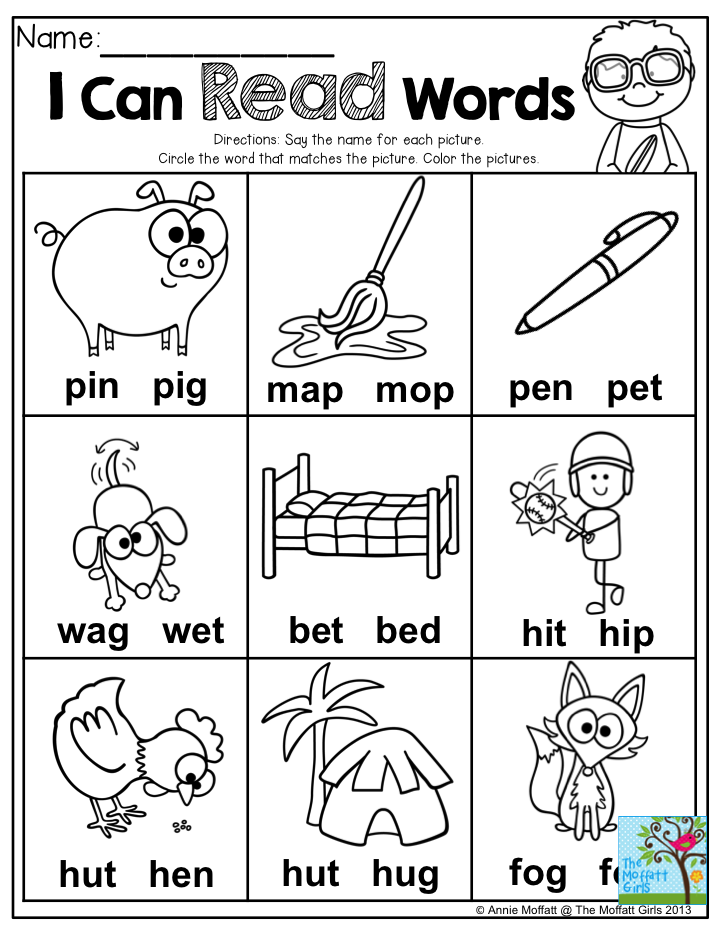 Let the child get acquainted not only with the sound, but also with the written form of the studied words. This will allow the student to quickly master the rules of reading and recognize familiar lexical units in the text;
Let the child get acquainted not only with the sound, but also with the written form of the studied words. This will allow the student to quickly master the rules of reading and recognize familiar lexical units in the text; - Keep a dictionary, this will form the child's discipline in relation to the subject being studied and facilitate the memorization process: you can always peep and repeat a forgotten word or enter a new word. nine0030
The above tips will make your child's learning English a great game!
If after reading the article you still have questions or want to share fresh information on this topic, we are waiting for your feedback in the comments!
English Words for Toddlers
Confirm your email to receive 20 assignment phrases daily and the ability to comment on assignments.
Specify another e-mail Send the letter again
change email address
Login via Vkontakte
My first words: English words for children
How to raise a polyglot child? The answer is simple: start learning languages with him as early as possible. Basic English will be an excellent foundation for the future knowledge of the baby and will help develop learning skills, because the brain of children at an early age absorbs an almost endless amount of information like a sponge. The main thing is to present it correctly.
Basic English will be an excellent foundation for the future knowledge of the baby and will help develop learning skills, because the brain of children at an early age absorbs an almost endless amount of information like a sponge. The main thing is to present it correctly.
In this article you will find not only simple first English words for children, but also recommendations for learning them. Open to your kid the fascinating world of English! nine0005
At what age do we start teaching?
Opinions of experts and parents themselves about the age at which it is worth starting to learn English with a child differ. Of course, you can start singing lullabies to your baby in English even from infancy, but your strength will be almost wasted.
Most agree that the most optimal age at which the average child begins to adequately learn English as a foreign language is 2.5-3 years. It is believed that at this age the process of formation of native speech is already ending. That is, the child must be able to clearly pronounce Russian sounds and words, as well as build sentences and have a coherent speech. nine0005
That is, the child must be able to clearly pronounce Russian sounds and words, as well as build sentences and have a coherent speech. nine0005
The exceptions here are when the child grows up in a multicultural environment. For example, if the mother is Russian and the father is English, then it is possible to communicate with the child in two languages from the very beginning. True, then your child will be funny to form sentences, and questions like: “Mom, can I have an apple” will constantly sound in the house.
This approach is good when the family lives abroad, where the main language is a foreign one. As the child gets older and starts attending kindergarten, the child will understand the difference between the languages of his parents and begin to use the words in the correct context. This applies, by the way, not only to English, but also to any foreign language. nine0005
If you want your child to speak only English from the very beginning, you can create an artificial multicultural environment. For example, at home talking with the baby only in a foreign language.
For example, at home talking with the baby only in a foreign language.
Is it possible to send a child to a language nursery or kindergarten with an English focus? Then do it without any hesitation. So the multicultural environment will be natural for the child: in the nursery they will communicate with him mainly in English, and at home you will be able to talk with the baby in Russian. In specialized language kindergartens, teachers will help your child learn English in a natural environment, and at home you can consolidate knowledge with him through various games and riddles. nine0005
If it is not possible to send your child to a language kindergarten, start learning English at home using the same methods that you used to learn your native language with him.
How to learn English with a child?
At a young age, of course, we are not talking about grammar or writing English words. To begin with, the child needs to learn how to pronounce sounds correctly, remember letters and form a basic vocabulary. By the way, it will be much easier for a kid than for an adult to remember the correct pronunciation of English sounds, which are so different from Russian ones. They will not have to rebuild their articulation apparatus as much as we, adults, who have been speaking their native language for many years. nine0005
By the way, it will be much easier for a kid than for an adult to remember the correct pronunciation of English sounds, which are so different from Russian ones. They will not have to rebuild their articulation apparatus as much as we, adults, who have been speaking their native language for many years. nine0005
Here is a list of skills that need to be developed in a preschooler in the first place:
- listening to speech
- speaking
- reading
In order for learning English not to become a burden for a child, add an element of the game to the learning process.
Get a bright glove doll and make it a kind of "teacher" for your child. Introduce your baby to a new toy and say that it only understands English, which means that in order to play with it, the child needs to learn an interesting new language. So this toy will become the main intermediary between you and your child in learning English. nine0005
First of all, learn the alphabet and the correct pronunciation of letters and basic sounds with your child. Make it better with the help of the popular ABC Song. This is how the English alphabet is taught all over the world, not only by foreigners, but also by native speakers themselves.
Make it better with the help of the popular ABC Song. This is how the English alphabet is taught all over the world, not only by foreigners, but also by native speakers themselves.
Next - form basic English for children: words and simple phrases. For example, make cards for basic words that the child already knows in their native language. These can be household items, animals, body parts, etc. It is better that the cards are bright, with the spelling of a word and a picture symbolizing a particular subject. You can stick these cards on household items so that the child constantly sees the names of objects in English and memorizes them automatically. nine0005
Incorporate English words into your regular vocabulary when communicating with your child. In the context of what is happening around the baby, it will be much easier to understand and learn the language. Playing at home or being outside, use the phrases and words you have already learned. If a child tells you: “Mom, look, a kitty!” Then answer: “Yes, it’s true, it’s a cat. How would it be in English? A cat. This is a cat.
How would it be in English? A cat. This is a cat.
By the way, it's better to start learning not just individual words, but whole phrases at once, as in the example above. That is, to acquaint with the very, very basic grammar. After all, if you tell your child only words, he will only know the translation, and if you start using whole sentences, then he will memorize in sentences. nine0005
Visualization and variety are important for learning English with a child. Children may enjoy books in English with colorful pictures that can be read together at bedtime instead of the usual Russian fairy tales. Also, do not forget about special educational cartoons in English, where bright characters tell the child about the basics of the language or teach him the alphabet.
Play fun, educational games with your little one so they don't get bored while learning English. It can be cards, pantomimes, drawings and much more. nine0005
Head [hed]
Hair [heə]
Eyes [aɪz]
Nose [nəʊz]
Teeth [tiːθ] teeth
Lips [lɪps]
Ears [ɪəz] ears
Neck [nek] - neck
Shoulders [ˈʃəʊldəz] - shoulders
Leg [leg] - leg
Feet [fiːt] - feet
Dog [dɒg] - dog
Cat [kæt] - cat
Kitten [n ˈ] -k
Puppy [ˈpʌpi] - puppy
Rabbit [ˈræbɪt] - rabbit
Parrot [ˈpærət] - parrot
Fish [fɪʃ] - fish
haamster [ˈhæmsstə] - hamster
snake [sneɪk] - snake
turtle [ˈtɜːtl] - turtle
Goat [gəʊt] - goat
pig [pɪg] - pig
sheep [ʃi
Horse [hɔːs] - horse
Cow [kaʊ] - cow
Goose [guːs] - goose
Chicken [ˈʧɪkɪn] - chicken
Duck [dʌk] - duck Wolf [wʊlf] - wolf
Bear [beə] - bear
Hare [heə] - hare
Brown [braʊn] - brown
Water [ˈwɔːtə] - water
Tea [tiː] - tea
Juice [ʤuːs] - juice
Sugar [ˈʃʊgə] - sugar
Bread [bred] - bread
Milk [mɪlk] - milk
Cheese [ʧiːz] - cheese
Eggs [egz] - eggs
Butter [ˈbʌtə] - butter
Meat [miːt] - meat Chocolate [ˈʧɒkəlɪt] - chocolate
Apple [ˈæpl] - apple
Spoon [spuːn] - spoon
Knife [naɪf] - knife
Clock [klɒk] - watch
Dress [dres] - dress
Skirt [skɜːt] - skirt
Shirt [ʃɜːt] - shirt
T-shirt ˜tiʐ - T-shirt
Jeans [ ʤiːnz ] - Jeans
Trousers [ ˈtraʊzəz ] - Pants
Shorts [ ʃɔːts ] hat
Socks [sɒks] - socks
January [ˈʤænjʊəri] - January
February [ ] - August
September [s e pˈtɛmbə r] - September
october [ɒkˈtəʊbə] - October
november [nəʊˈVembə] - November
December [dɪˈs e Mbə] - December
SUN [Sʌn]
Cloud [klaʊd] - cloud
Wind [wɪnd] - wind
Snow [snəʊ] - snow
Fog [fɒg] - fog
Cold [kəʊld] - cold
Hot [hɒt] - hot
Winter [ˈwɪntə] - winter
Spring [sprɪŋ] - spring
Summer [ˈsʌmər] - summer
Autumn [ˈɔːtəm] - autumn
This list of first English words for children is far from complete. Include in it those words that the child encounters daily.
Include in it those words that the child encounters daily.
And most importantly, do not forget: in order to teach your child English from an early age, you need to be confident in your knowledge. You can check your level of English before you start learning the language with your child here. nine0008
Source: http://speakenglishwell.ru/anglijskie-slova-dlya-detej/ puzzle-english.com/directory/words-for-kids
Words in English for children: how to remember?
I want to remember words in English faster and forever, so that they will definitely take root in memory. And then use them in every situation you need. For example, students are learning the topic “Fruits”, and your child already knows “strawberry” ━ strawberry, “sweet cherry” ━ sweet cherry, and “watermelon” ━ watermelon, and “tangerine” ━ tangerine. nine0005
Children need to learn words in English constantly, set new goals and achieve better results. For example, “learn 10 unknown words in English from the topic “travel”. Thus, the child will regularly replenish vocabulary.
Thus, the child will regularly replenish vocabulary.
We are sure that you will have a question: “What is the best way to teach in order not to overload the child?”
We also thought about this and decided to take up the topic “Learning words in English” seriously and consider the options in detail. nine0391 In our time, when children are more efficient in searching for and consuming information online, it is best to organize additional learning activities for them online as well. Children are already accustomed to googling, screening and using everything. AllRight School has provided for this and prepared free sites for your little student where you can learn words in English with translation, for free and interactively.
We will tell you the features of each of them so that you can either choose the one you like according to the description, or test each option yourself. nine0005
Vocabulary.com
The name of the site and, of course, its translation ─ “dictionary” ─ tells us that here you can create your own dictionary.
Registration is possible through Google or Facebook account.
You can register as a student and help your child build their own English vocabulary. It is enough to use the “Dictionary” section.
If your baby already has a certain vocabulary, he can pick up the meanings in the ready-made lists of words in English. nine0391 You can test how well a child remembers words and understand what else needs to be worked on in the “Play the Challenge” section.
Learn English
This site is definitely suitable for learning English words for those who are just starting to learn the language.
It will be especially useful and interesting for children, because here an approach has been developed for learning new words in English using electronic flash cards.
By the way, don't be afraid that the site is in English. The built-in translator in the browser will help you find the section you need. nine0391 How to learn words in English with this approach?
We advise you to do this in three steps:
1. Go to the “Vocabulary” section, select the topic that the child would like to work on. You look at pictures and words, try to remember them with the help of associations.
Go to the “Vocabulary” section, select the topic that the child would like to work on. You look at pictures and words, try to remember them with the help of associations.
2. You show the child a picture, and he remembers what word in English corresponds to it.
3. The third step is very solid 🙂 The child needs to write what was in the picture.
Topics on the site are considered the most basic: alphabet, family, education, food, clothing. nine0391
AllRight ━ English for children. Learn a language with Charlie!
Download the game from our school in Google Play or AppStore.
The game has 12 themes: colors, my school, my toys, my family, my pets, my body, animals, clothes, entertainment, transport, my home and food. Each topic has 2 lessons.
Charlie, of course, helps to learn the words. First, he pronounces the word, then asks the child to say this word.
On the screen, the child sees a card with a picture and a word. If the child correctly repeated the word, then Charlie moves on to the next card. If the child said the word incorrectly, Charlie will ask him to repeat it until he achieves the correct pronunciation. For their success, the child receives star awards. nine0391 Instructions on how to play with Charlie read here.
If the child said the word incorrectly, Charlie will ask him to repeat it until he achieves the correct pronunciation. For their success, the child receives star awards. nine0391 Instructions on how to play with Charlie read here.
Memrise
This is one of the most famous sites for learning English words in the world. Just imagine, about 40 million students from more than 50 countries of the world study here.
And your child can also join such a huge international company 🙂
The main advantages of this resource:
- stylish design
- interactive cards
- emphasis on visual perception
A flaw that can be a little inconvenient for Russian-speaking users:
- you will need to enter the translation for many words yourself.
But this will help the child once again practice the word and remember it better.
Try it, your child will have fun learning new words in English with bright pictures.
The site methodology was developed by Princeton University neuroscientist Greg Detre and mnemonicist Ed Cook.
Quizlet
And this site is literally created to captivate little students to learn words in English. Firstly, the design is designed like a cartoon, visually very attractive 🙂
Secondly, here you can choose ready-made modules, or you can create your own lists of words you want to learn in English.
Guide on how best to work with this service:
- create a list of words that you would like to learn
- enter a translation for them
- save and go to the "Cards" section
- in this section you can listen to the pronunciation of the entered words
- the next section is "Learning", where you need to find a translation for the word; if you choose incorrectly, the word will occur until you remember the correct translation
- to check how words are spelled, use the "Spelling" section
- there is a test at the end of the module, take it, thereby checking how well you remember these words in English.
We are sure that the little student will ask himself to sit on the site a little more and learn the words.



